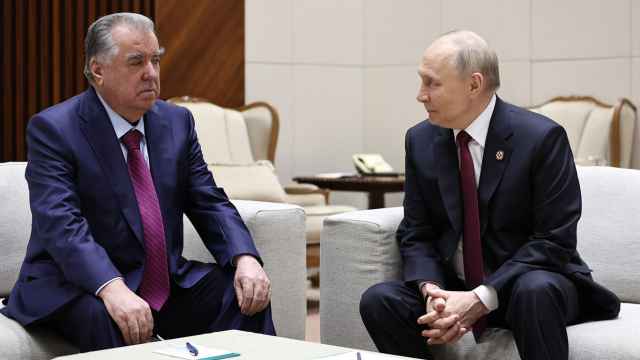
Felix Kugel
Vice-president & Managing Director
ManpowerGroup Russia & CIS
The previous economic crisis has changed the employment landscape. Nowadays, it is a major struggle to manage operating costs while investing in talent to maximize performance. There is heightened pressure to execute business strategy and meet the goals that have been set. Yet the first move most companies usually make during a recession is to cut costs by reducing their workforce.
A significant driver of success in any business environment is human capital: people. In fact, according to statistics, 58 percent of organizations surveyed rated people as having the greatest impact on executing business strategy. This finding isn't surprising. After all, people produce products, deliver services, process paperwork and communicate with customers.
As the business environment is slowly improving, many organizations have to develop a more flexible workforce and keep fixed costs low. Many rely more and more on external talent or contingent workers — temporary employees, contractors, outsourced workers and consultants — to achieve business goals in a more strategic way. In a recent Manpower survey of 41,000 employers in 35 countries and territories, more than a third of respondents said they view contingent labor as a key element of their workforce strategy.
Benefits of a Contingent Workforce
The practice of supplementing permanent staff with contingent labor is valuable as businesses experience the ebb and flow of the marketplace, seasonal lows and highs, or product-specific launches and promotions. By using a properly constructed contingent workforce strategy, businesses gain access to skilled and motivated pools of individuals who help meet business goals while controlling overall costs.
As the economy stabilizes, the market conditions rebound and demand improves, rebuilding workforce with contingent staff can be a smart strategy as well. It's particularly beneficial since SOME contingent workers can/or would like to transition to permanent staff, thus effectively reconstructing your workforce with minimal risk as conditions demand.
In addition, no matter how well you prepare for and manage a project, permanent employees have planned or unplanned absences that may disrupt your workflow. Skilled contingent staff can quickly step in to perform critical tasks so the work can proceed at a normal pace. In this economic climate, in some countries more so than in others, there is a large pool of highly skilled individuals available to help meet short-term needs.
The reverse scenario is also true: contingent workers can free up time for your permanent staff to focus on critical tasks while the contingent workers focus on more baseline tasks that are necessary but don't require highly-skilled expertise. A contingent workforce can also be beneficial when a new product or service is launched, requiring new groups of people and/or new skill sets. By partnering with a contingent workforce provider early on, you can be sure to have the people required, when and where you need them — whatever skill sets are required.
The ability to evaluate a worker on the job before formally hiring the person permanently is another great benefit. The best way to get a good understanding of skills and capabilities is to see that person in action. Observing the individual in your environment interacting with permanent staff and communicating with customers significantly increases your ability to predict success within the team and within the organization. Employing a contingent worker also helps reduce hiring costs by eliminating the need to advertise, recruit and screen.
In an effort to reduce costs, some companies decide to outsource functions that are not core competencies or aligned to key business strategies. In this case, a contingent workforce can easily add value. Partnering with a company skilled in the tasks in question allows your permanent staff to focus on core products or services. The secondary aspects of your operations can be performed by outside experts seamlessly and cost efficiently. In addition, there are some cases when former or retired employees can transition to the partner company providing the outsourced solution. This is just one more way to ease the burden of reducing the permanent workforce while retaining the required skill sets and maintaining morale.
As the economy improves, challenges will continue to evolve. Businesses have to remain agile. It will be important to evaluate the balance between a permanent and contingent workforce. A contingent workforce allows you to seamlessly adjust during the economic recovery by gradually and efficiently rebuilding permanent staff while responding to market demands. This ultimately allows your organization to manage costs and invest in the critical talent required to drive the business to heightened levels of success.
A Message from The Moscow Times:
Dear readers,
We are facing unprecedented challenges. Russia's Prosecutor General's Office has designated The Moscow Times as an "undesirable" organization, criminalizing our work and putting our staff at risk of prosecution. This follows our earlier unjust labeling as a "foreign agent."
These actions are direct attempts to silence independent journalism in Russia. The authorities claim our work "discredits the decisions of the Russian leadership." We see things differently: we strive to provide accurate, unbiased reporting on Russia.
We, the journalists of The Moscow Times, refuse to be silenced. But to continue our work, we need your help.
Your support, no matter how small, makes a world of difference. If you can, please support us monthly starting from just $2. It's quick to set up, and every contribution makes a significant impact.
By supporting The Moscow Times, you're defending open, independent journalism in the face of repression. Thank you for standing with us.
Remind me later.





